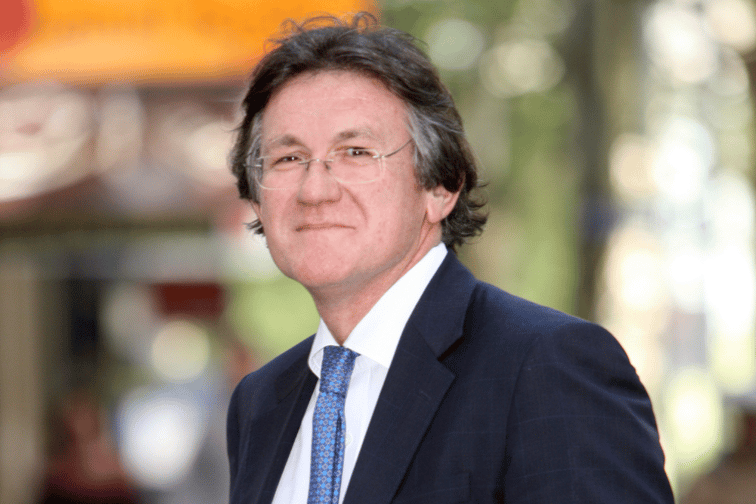

NAB has revised its forecast for interest rates – the major bank is now predicting the official cash rate will reach 4.6% by August, following altered expectations about growth and inflation.
The bank had previously increased its rate call to 4.35% following the Reserve Bank of Australia’s decision on June 6 to lift the OCR to 4.1%, but in a NAB Monetary Police Update released today it has now “tentatively” added an additional 25 basis points.
NAB economists, led by group chief economist Alan Oster (pictured above), said they were uncertain of exactly when these hikes would occur but pencilled in 0.25% increases for both July and August.
The RBA board is due to meet next on July 4, and all eyes will be on the central bank following its decision this month to raise interest rates for the 12th time.
“While inflation has clearly peaked, and we (like the RBA) see inflation returning to the band by 2025, the extended period of inflation above target amidst a tight labour market poses the risk of stronger wage and price expectations becoming imbedded,” Oster said.
While NAB’s Monthly Business Survey for May survey showed that the economy was slowing – as consumer spending began to stall – inflation and wage data still show that price pressures remain elevated, Oster said in the Monetary Policy Update.
“This was highlighted by Q1 national accounts which saw quarterly GDP growth of just 0.2% and increasing signs of rates and inflation weighing on the consumer, while dwelling investment continued to fall,” he said.
The household income account showed a further moderation in the savings rate. While inflationary pressure has peaked, both the domestic final demand and consumption deflators remains high.
“Interestingly, average earnings per hour (the broadest measure of labour costs, including bonuses and other payments) while accelerating continues to track below 4%,” said Oster.
NAB also predicts that domestic labour cost pressures will be important for how inflation moderates.
Oster said that global goods inflation pressures were waning as growth slowed and freight costs normalised, pointing to a significant easing in upstream cost pressures for domestic consumer goods prices.
However, it remains uncertain how quickly businesses will pass on any easing in prices to the consumer.
NAB said the key risks to inflation remaining higher for longer would be driven by services as had occurred globally.
While measured wage growth, according to the wage price index (WPI) at 3.7% year on year is considerably below that of other advanced economies, the average wage increase of those people (in the private sector) receiving a pay rise in recent quarters is above 4%.
Oster said this pointed to the risk that overall WPI would continue to strengthen in coming quarters, with the most recent increase in the national minimum wage providing for even faster rates of wage growth for a significant proportion of the labour force.
With weak cyclical productivity growth, Oster said it was unlikely that inflation would fall back quickly towards the middle of the 2% to 3% target band.
“Indeed the RBA has noted that at present wage growth is consistent with inflation returning to the target band with the proviso that ‘productivity growth picks up’,” he said.
“Ultimately, recent tightening actions have been about inflation expectations –while previously well anchored there is a growing risk that ongoing price rises continue to feed back into price setting behaviour in the economy.”
NAB has also dialled back its expectations for growth over this year and next, predicting GDP growth of just 0.5% over 2023 and 0.9% over 2024.
Oster said that while the economy remained resilient last year, there were increasing signs that interest rates were beginning to flow through, with spending growth slowing, an ongoing impact on housing construction and softening capital expenditure expectations.
NAB also noted that some of the impact of previous interest rate rises had still to occur, with about 75bps of hikes yet to be passed onto mortgage holders.
The bank’s economists also said unemployment “seems to be beginning to edge up”. They expected unemployment to reach 4.3% by year’s end and 5% by the end of 2024.
“On our expectation that the economy will slow noticeably in the second half of 2023 and into 2024, seeing annual GDP growth of around 0.5% this year – its slowest rate since the 1990s recession – and the unemployment rate rising above the NAIRU (non-accelerating inflation rate of unemployment) the RBA will need to return to forward-looking metrics when setting policy,” Oster said.
He expects that by mid-2024 slower growth will have a significant impact on the labour market and inflation pressure will ease. “We continue to expect the cash rate to normalise to a more neutral rate of around 3% with rate cuts likely to commence in Q2 2024.”
